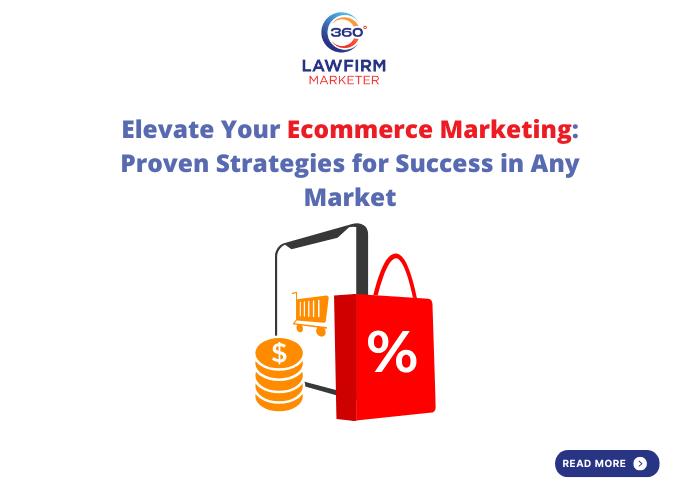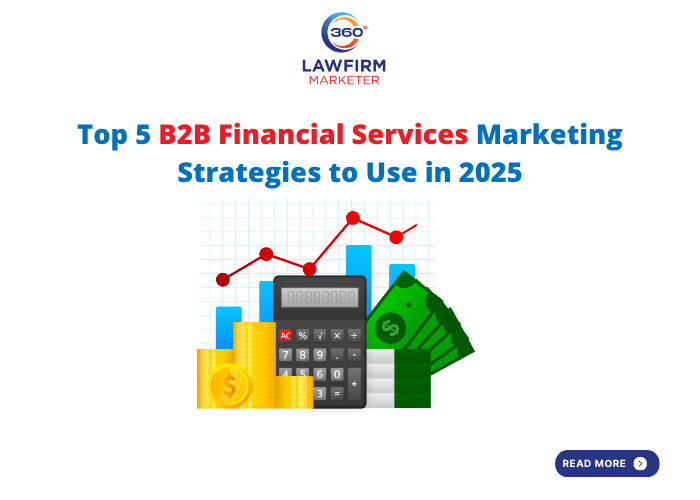Elevate Your Ecommerce Marketing: Proven Strategies for Success in Any Market

Introduction
Ecommerce marketing has evolved from “run some ads and hope” to a sophisticated, data-driven discipline that spans channels, devices, and borders. Mobile shopping, real-time payments, AI-powered personalization, and user expectations for seamless cross-channel experiences have raised the bar. Having a website isn’t enough anymore you need an ecommerce marketing plan that connects acquisition, conversion, and retention, locally and globally.
In this guide, you’ll learn why ecommerce marketing matters most in 2025, how to build a step-by-step strategy, which ecommerce marketing strategies and channels reliably move the needle, and what it takes to expand internationally with confidence.
Why Ecommerce Marketing Matters in 2025
- Ecommerce keeps growing globally. Worldwide retail ecommerce sales are forecast at $6.42T in 2025, representing ~20.5% of total retail and still climbing toward 2028.
- Digital ad spend is surging and increasingly measurable. Analysts expect global advertising to pass the $1T mark in 2025, with digital capturing the lion’s share and growing high single to double digits. This makes attribution-friendly ecommerce advertising more critical than ever.
- Mobile & digital payments dominate the checkout. Digital wallets already account for about half of global ecommerce spend, with share still rising; mobile’s share of ecommerce has surged and is on track to represent nearly two-thirds by the end of the decade.
- Bottom line: Marketing drives discoverability, conversion, and lifetime value in an increasingly crowded, mobile-first, and wallet-driven marketplace.
Step-by-Step Ecommerce Marketing Strategy
1) Define Goals and Set KPIs
Use SMART goals (Specific, Measurable, Achievable, Relevant, Time-bound). Examples:
- Increase international revenue share from 10% to 18% in Q3–Q4 via localized PPC and onsite translation.
- Lift AOV from $58 to $70 by Q2 using bundles, free-shipping thresholds, and cross-sell flows.
- Improve email-attributed revenue by 25% in six months with advanced segmentation and product-triggered automations.
Track core ecommerce KPIs: conversion rate, AOV, CAC, LTV, ROAS, cart abandonment, repeat purchase rate. GA4 provides native ecommerce metrics; pair that with business ratios (e.g., LTV:CAC). Aim for an LTV:CAC ≥ 3:1 for sustainable growth.
2) Allocate Marketing Budget
Budget from top down (revenue target → allowable CAC/ROAS) and bottom up (channel tests and proven winners). With digital now ~70%+ of ad spend in many markets, most brands skew budgets toward paid search/shopping, social, retail media, and creator content, while funding owned channels (email/SMS) to reduce dependence on rising CPMs.
3) Identify and Understand Your Target Audience
Create buyer personas with demographics, psychographics, device and channel preferences, and payment behaviors. Use site analytics, post-purchase surveys, CRM order data, and session recordings to map friction points and desires. (Heatmaps/recordings via Hotjar help you see why users behave a certain way.)
4) Conduct Market Research
- SWOT: clarify strengths to emphasize (e.g., product quality), weaknesses to fix (site speed, returns), opportunities (new geos), threats (price undercutting).
- Competitor analysis: audit messaging, pricing, shopping experience, and payment options by region (wallets, BNPL, A2A/UPI). Worldpay’s GPR gives reliable country-level payment preferences.
- Trend tracking: m-commerce’s rising share and the growth of instant and wallet payments affect checkout and channel mix.
5) Choose the Right Marketing Channels
Match product type and audience preference to the channel:
- High-intent: Google Search/Shopping, Amazon great for capture.
- Discovery: Meta, TikTok, YouTube, creators/influencers for visual/demo-friendly products.
- Retention & CLV: Email/SMS, loyalty, subscriptions.
- Affiliate/partnerships: extend reach efficiently in new markets.
- Retail media: for marketplace sellers and omnichannel brands; the fastest-growing digital segment.
6) Analyze Data and Iterate
Instrument everything: GA4, ad platform pixels, server-side events, surveys, and cohort reports. Monitor:
- CAC & blended CAC, ROAS, MER (marketing efficiency ratio)
- AOV, repeat rate, LTV:LTV cohorts, refunds
- Funnel: view → add-to-cart → checkout → purchase; the average cart abandonment rate is ~70%, so finding and fixing drop-offs is key.
7) A/B Testing for Optimization
Test value props, imagery, page layout, pricing/discount framing, CTAs, shipping thresholds, and checkout friction. Start with hypotheses from analytics and user behavior, run A/B tests long enough for significance, and document learnings in a test archive. Good playbooks and tools exist for ecommerce testing.
Ecommerce Marketing Tactics That Work
Content Marketing
Educational blogs, buying guides, comparison pages, and UGC boost SEO and reduce pre-purchase anxiety. Pair content with email capture and remarketing audiences.
Email and SMS Marketing
Email remains a top-ROI channel (many brands report $36+ per $1), and automated flows (welcome, browse/cart abandonment, post-purchase) can drive much higher revenue per recipient than one-off campaigns. SMS delivers immediacy and strong CTRs; combine with email for omni-touch journeys.
Klaviyo/Omnisend/Postscript benchmarks show automation dramatically outperforms bulk sends; SMS lists convert quickly when used for time-sensitive offers and order updates.
Short-form video and creators fuel discovery, especially where social commerce and in-app checkout are active. Tie content to PDPs with shoppable links and build remarketing pools.
Search Engine Optimization (SEO)
Own the queries that signal intent. Ensure fast Core Web Vitals, international hreflang where applicable, structured data, and internal linking that mirrors your category tree. (For multilingual SEO, implement bidirectional hreflang head tags or sitemaps and consider x-default for a global fallback.)
Pay-Per-Click Advertising (PPC)
Use brand + non-brand search, Performance Max/Shopping for catalogs, and feed optimization. Layer audiences (remarketing, customer match, lookalikes), and control CAC with negative keywords, budgets by margin, and creative that answers objections.
Affiliate Marketing
Low-risk, pay-for-performance distribution especially useful in new countries where publishers already have trust.
Influencer Marketing
Creators compress the funnel; measure beyond vanity metrics with promo codes, unique links, and post-view lift.
Video Marketing
Demo benefits, unboxings, comparisons, and how-tos reduce uncertainty and boost conversion. Repurpose across YouTube, TikTok, PDPs, and email.
Reviews and Testimonials
Displaying reviews can increase conversion by ~270% after the first five reviews, with even larger lifts on higher-priced items; credibility peaks around 4.0–4.7 stars (not a “perfect 5”).
Going Global: Marketing Strategies for International Ecommerce
- Localization & Translation
“Can’t read, won’t buy.” Customers strongly prefer buying in their language. Firms that “speak the customer’s language” are far more effective at selling internationally, making localization a growth engine not a luxury. - Cultural Relevance
Adapt product copy, imagery, size charts, holidays, and offers to local norms. Validate with local feedback and small-scale tests. - Multilingual SEO
Implement hreflang (page-level or sitemap) with reciprocal links between language/region variants; use x-default for the selector page and maintain unique content to avoid canonical consolidation. - Currency, Payment Methods & Taxes
Offer local currencies and preferred methods (e.g., wallets, A2A/UPI, BNPL). Digital wallets and real-time payments are now mainstream and often expected; consult regional data from Worldpay’s GPR when prioritizing payment options. - Shipping & Duties
Show delivered-duty options (DDP), clear timelines, and local return addresses where possible to reduce friction and cart abandonment (~70%). - Customer Support
Multilingual help (chat/email), local hours, and localized transactional emails/SMS to reinforce trust.
Ecommerce Platforms & Tools That Support Marketing
- Shopify
Robust app ecosystem for marketing automation, AI-assisted workflows, and analytics. Ideal for fast iteration and ecommerce personalization via apps (Klaviyo, Rebuy, etc.). - Marketing Automation & Retention
Klaviyo (email/SMS, predictive analytics, flows) is purpose-built for ecommerce and integrates tightly with major ecommerce platforms. - Analytics & Experimentation
GA4 for ecommerce events and funnels; pair with Optimizely for A/B/n, personalization, and AI-assisted test ideation/reporting; Hotjar for qualitative behavior insights. - Payments & Global Checkout
Use Worldpay’s Global Payments Report to prioritize local methods (wallets, A2A, BNPL) and reduce friction in new markets. - Implementation Partners
Agencies and solution providers such as 247 Digital Marketing services can help implement SEO-friendly storefronts, personalization, PPC, and API integrations across your stack.
Real-World Optimization Ideas (You Can Test Next)
- Free shipping threshold at ~20% above current AOV; evaluate lift vs. margin.
- Checkout simplification: guest checkout, fewer fields, express wallets (Apple Pay/Google Pay/Shop Pay); measure drop-off deltas. (Wallets are increasingly preferred.)
- Bundles & cross-sells on PDP/cart to raise AOV.
- Review seeding: capture the first 5–10 reviews fast expect outsized conversion impact.
- Abandonment flows (email+SMS): time-staggered reminders with dynamic cart content; automation often yields 30× RPR vs. bulk campaigns.
Conclusion
Winning in 2025 means adopting holistic, data-driven ecommerce marketing strategies: set SMART goals, pick channels strategically, obsess over measurement, and iterate with disciplined experimentation. As you expand across borders, localize experiences, accept local payments, and respect cultural nuance. Brands that experiment, optimize, and localize while investing in customer retention via email/SMS and personalization build resilient growth in any market something an experienced Ecommerce Marketing Agency New York can help you achieve.
FAQs
Q1) How do customer journey maps contribute to ecommerce marketing plans?
Journey maps reveal where prospects get stuck or drop off from ad click to post-purchase. Map each stage to content and channel tactics (e.g., educational content for consideration, reviews for decision), align KPIs per stage, and design A/B tests to reduce friction (navigation, PDP clarity, checkout). Use GA4 for quantitative signals and Hotjar for qualitative insights.
Q2) What are effective strategies for holiday or seasonal ecommerce marketing?
Start early with list growth, segment VIPs, and preload automation (price-drop, back-in-stock, cart-abandon). Offer wallet-friendly checkout and transparent shipping cut-offs. Coordinate paid search/shopping with feed hygiene and promotional pricing; refresh creatives weekly. Post-holiday, run win-back and exchange/returns flows to protect margin and customer retention. (Automation routinely outperforms one-off sends.
Q3) How can marketers optimize the post-purchase experience in ecommerce?
Use transactional emails/SMS for proactive updates, care guides, and cross-sell education; invite reviews after delivery (first 5–10 reviews drive large conversion lifts). Add localized support, easy returns, and loyalty incentives. Track repeat rate, time-to-second purchase, and LTV by cohort.





